In 1994, the annual juried woodworking exhibition began as an opportunity to encourage new, creative and imaginative designs in wood. Encouraged to think like Esherick and invent designs both expressive and functional, professional woodworkers, artists, hobbyists and craftspeople have submitted hundreds of pieces reflecting each year’s theme. From wooden jewelry to wall cabinets, chairs to desk accessories and everything in between, the next generation of artistry in wood has passed through the doors of the Wharton Esherick Museum.
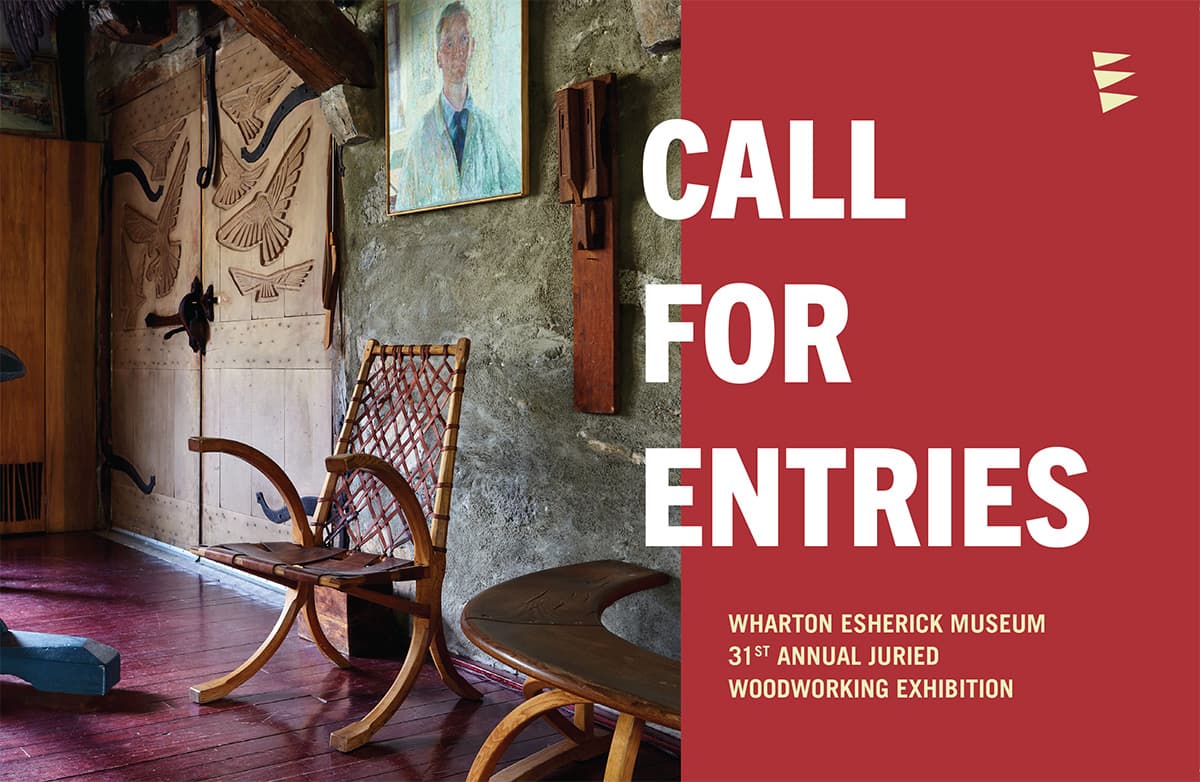
Theme: Renewal
DEADLINE: The deadline has passed for submissions to this call for entries (January 6, 2025)
JURORS: Rosanne Somerson, President Emerita and Professor of Furniture Design, Rhode Island School of Design, and Jennifer Scanlan, Executive Director, JRACraft, along with Emily Zilber, WEM’s Director of Curatorial Affairs and Strategic Partnership
THE CHALLENGE
Acts of renewal are at the core of what it means to be an artist. Artists across all disciplines bring new life, energy, and perspectives to the world through creative ideation and the skillful manipulation of materials. In turn, consuming art can both renew our ability to see the world as it is and allow us to imagine previously unseen futures. We see this time again with visitors to Studio who leave their tours transformed – and certainly renewed! – by the intensity of Wharton Esherick’s artistic vision.
Across his career, Esherick took renewal seriously. After training as a painter he renewed his artistic identity time and again, finding inspiration enough to make everything from illustrated books to stage sets and costumes. He believed in renewed approaches to form, as seen in his refusal to make furniture that looked like anything previously on the market, instead creating objects that existed between function and sculpture. He believed in renewing materials, giving second lives to wooden objects like hammer handles and wagon wheels (Hammer Handle Chair, Wagon Wheel Chair). Where others saw cast-off scraps, only useful for firewood, Esherick envisioned a renewal: the now-iconic floor of the Studio’s Dining Room, a sensual and organic mosaic.
While renewal and its meanings are always on our mind at WEM, the past few years have brought it to the forefront as we’ve reached significant milestones: the completion of an initial plan for an enhanced museum campus (2020); a transformative endowment gift from the Windgate Foundation (2020); our 50th Anniversary celebration (2022); and a feature segment on PBS’s Craft in America, to name a few. We’ve embarked on significant restoration projects such as reviving the dappled fresco on WEM’s Silo, an act of renewal that will restore Esherick’s vision and allow us to welcome visitors for years to come.
In the fall of 2024, over seventy works from WEM’s collection will leave the studio for The Crafted World of Wharton Esherick, a traveling exhibition (with an accompanying catalog) that opens in October at the Brandywine River Museum. As WEM’s largest collaborative show to date, it offers the possibility for renewal in several ways. Objects that have not travelled outside Esherick’s Studio in decades – or ever – are afforded the chance to have new life in a gallery context before returning home. Likewise, WEM’s interiors have largely existed in the same way since the museum’s opening in 1972; for the first time, they will be temporarily renewed through the inclusion of little seen works from the museum’s collection (and select private collections), on display in the spaces where they were originally made or shown for the first time in decades. While we anticipate returning to form after the closing of the Crafted World, we will do so having renewed our understanding of how we might share the riches of WEM’s collections and enhance the visitor experience.
For the Wharton Esherick Museum’s 31st Annual Juried Woodworking Exhibition we invite you to think about renewal, and how it exists in your artistic life. Have you made an artwork that represents a moment of personal, professional, or ideological renewal? When have you transformed a material, giving it new life in the process? What objects facilitate moments of renewal, restoration, or caretaking? Is there a way to renew meaning from the past through artwork that’s wholly contemporary?
With these initial prompts, we encourage applicants to think about this idea broadly and hope that you’ll submit entries across the spectrum of thematic approaches (so long as they contain wood in some way). We look forward to seeing it all.
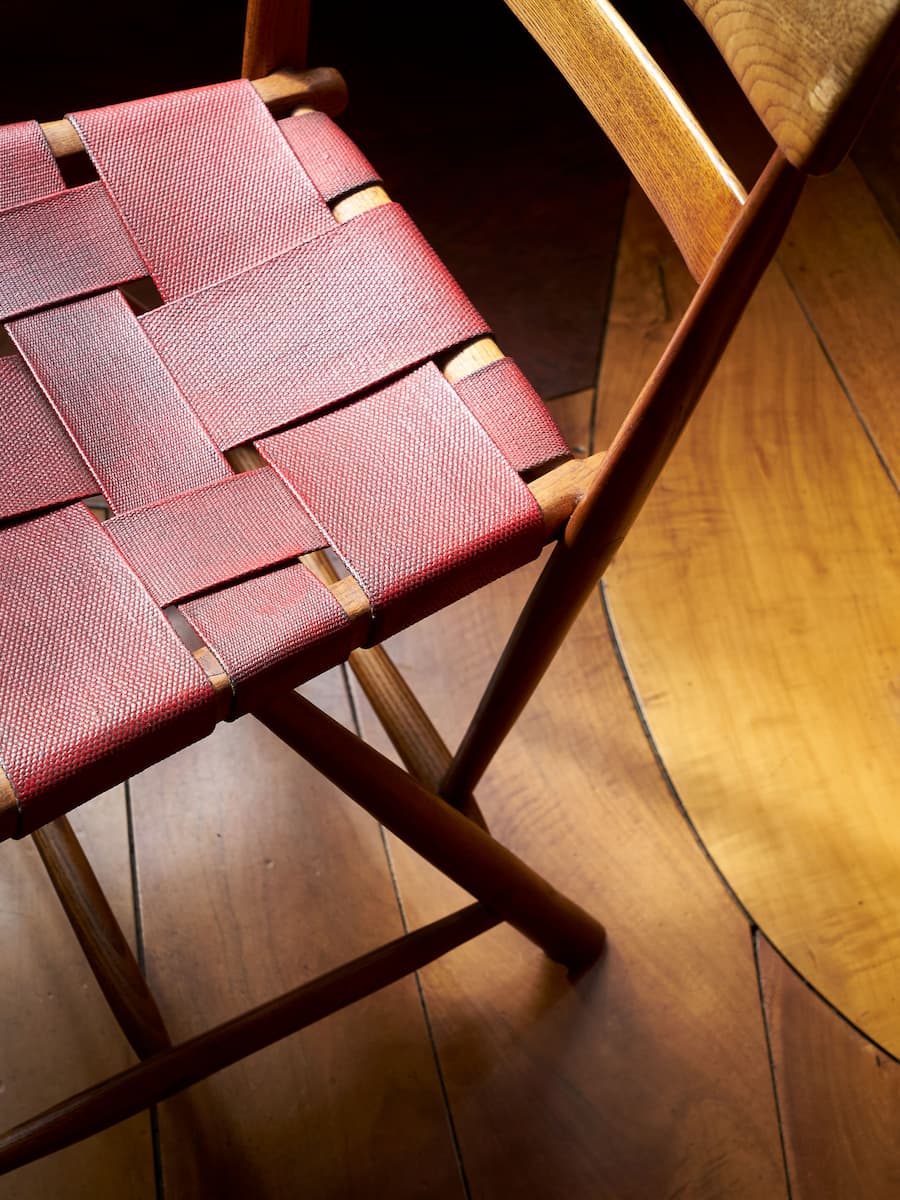
Photography by Joshua McHugh
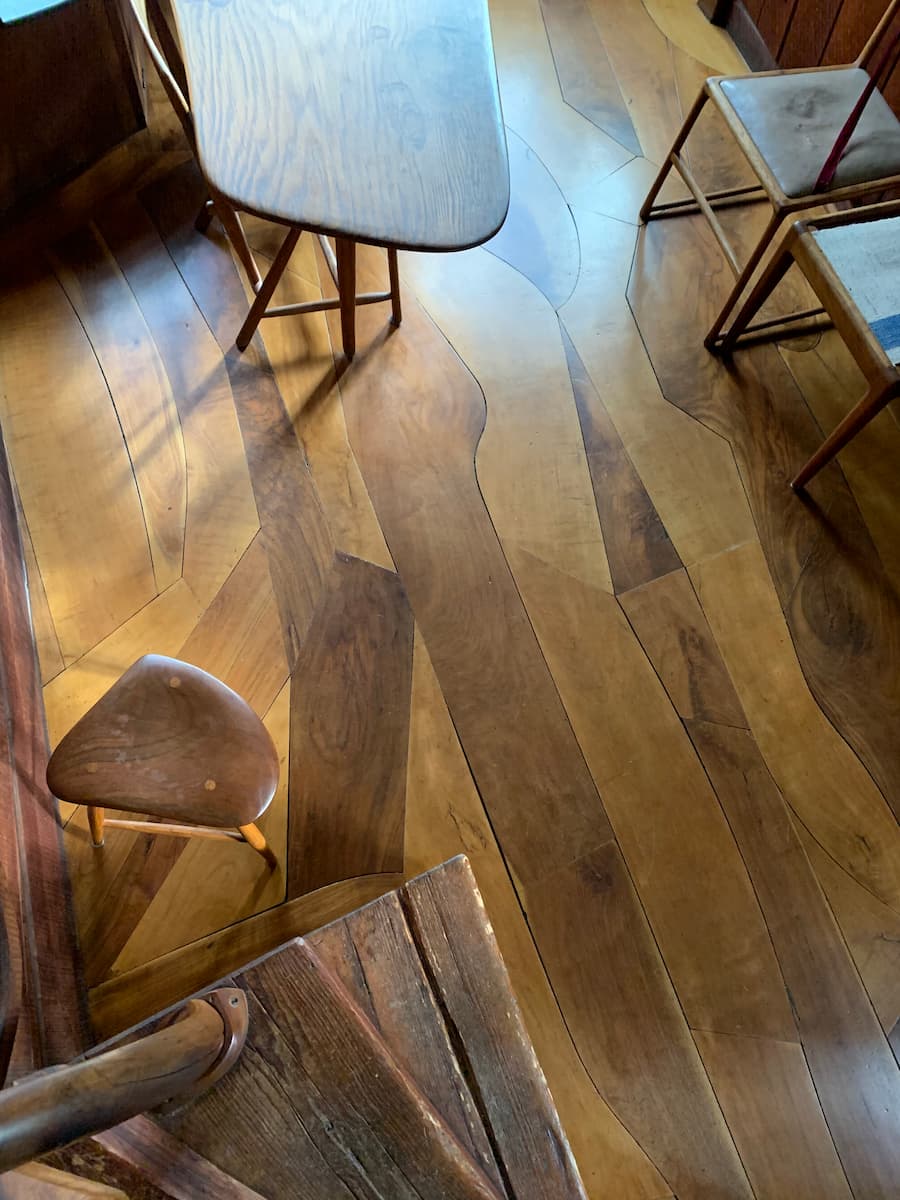
Dining Room floor in Esherick’s Studio
SELECTION
Jurors Rosanne Somerson, President Emerita and Professor of Furniture Design, Rhode Island School of Design, and Jennifer Scanlan, Executive Director, JRACraft, along with Emily Zilber, WEM’s Director of Curatorial Affairs and Strategic Partnerships, will select the finalists for the exhibition from the images submitted using a blind jury process. It is strongly recommended that you submit high-quality images to ensure the jury sees your piece at its best.
The competition is open to both emerging and established makers across all artistic disciplines, so long as wood is part of the finished piece. Entered works should be available for the duration of the exhibition. Jurors will evaluate the submissions based on inventive approaches to the prompt, craftsmanship and technical proficiency, aesthetics, and other considerations as determined by the jury.
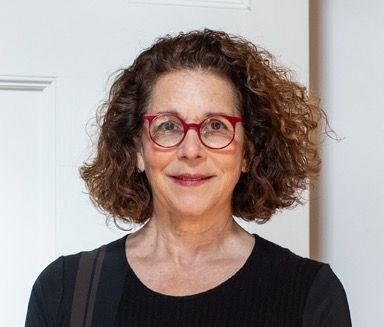
A designer, professor and academic leader, Rosanne Somerson has been advancing art and design for decades. After launching a successful studio design practice, she returned to the Rhode Island School of Design (RISD) to teach and then co-founded the Furniture Design Department before serving as Provost, interim President, RISD’s 17th President, and now President Emerita. An author and subject of many podcasts, she frequently speaks and writes about the power of art and design as core elements of critical thinking and making. She maintains a studio and consulting creative practice, designing and creating furniture for exhibitions and commissions. Her works have been prominently featured in numerous publications and exhibited in major museums and galleries throughout the globe, including the Musée des Arts Décoratifs at the Louvre in Paris, and she is also represented in many private, corporate and museum collections. Somerson is included in the Smithsonian’s Archives of American Art Oral History Project and has been awarded many honors including two fellowships from the National Endowment for the Arts, the James Renwick Alliance Distinguished Crafts Educator Award, a 2019 Pell Award for Outstanding Leadership in the Arts., a Lifetime Distinction Award from the Furniture Society, and is a named Fellow of the American Craft Council and a Life Trustee of Haystack Mountain School.
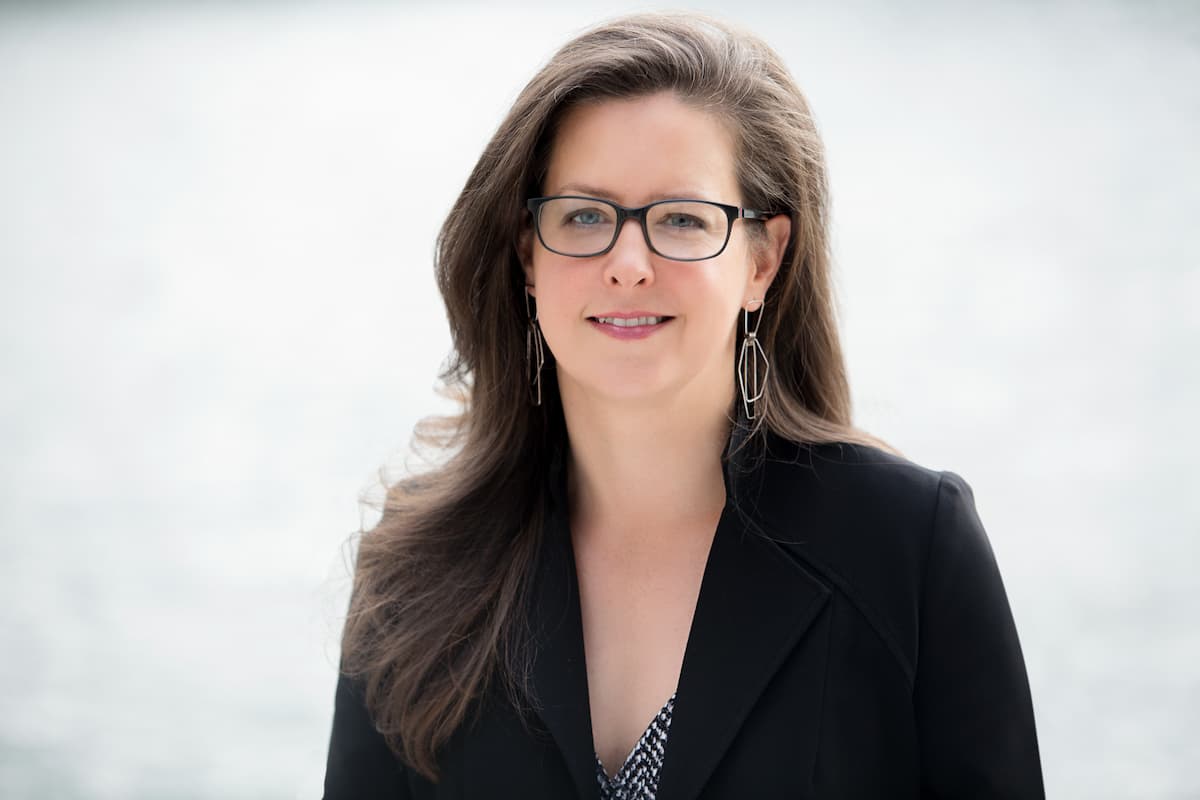
Jennifer Scanlan is the Executive Director at JRACraft. Prior to joining JRACraft, Jennifer served as the Deputy Director at Craft Alliance in St. Louis, MO, where she made substantial contributions to the organization’s growth and outreach efforts. Her career includes pivotal positions such as Curatorial and Exhibitions Director at Oklahoma Contemporary in Oklahoma City, and Associate Curator at the Museum of Arts and Design in New York City. Jennifer has also worked internationally as an independent curator and consultant on exhibitions, public art projects, and publications.
She has taught courses in Contemporary Craft and Craft History at Courtauld Institute of Art Summer School in London, England, and at Parsons The New School for Design in New York. She has a BA in art history and Italian from Vassar College, Poughkeepsie, New York, and an MA in the history of decorative arts, design, and culture from the Bard Graduate Center, New York, New York.
THE EXHIBITION
A group of works from the final jury selection will be exhibited in the Museum’s 150 square foot visitor center gallery. All of the works in the jury selection will be shared via an online exhibition on the Wharton Esherick Museum’s website and through a small publication. To learn more, please see our recent Juried Exhibitions including Wood And… (2021), Home as Self (2022), Telling Tales (2023), and Rhythms (2024).
WEM will also host public programs connected to the exhibition. Many of the virtual public programs from this past year are also available as recordings on our website.
The pieces may be offered for sale with a 30% commission for the Wharton Esherick Museum; prices are set by the artist. Cash prizes of $500, $300, and $200 for 1st, 2nd and 3rd place will be awarded, as well as a $200 Viewer’s Choice award voted on via WEM’s social media platforms.
Pieces selected for the exhibition will be displayed in a secure area and are insured by the Museum from the time of their arrival to the time of their delivery to the artist or purchaser. The exhibition will run from June 12 through September 7, 2025.
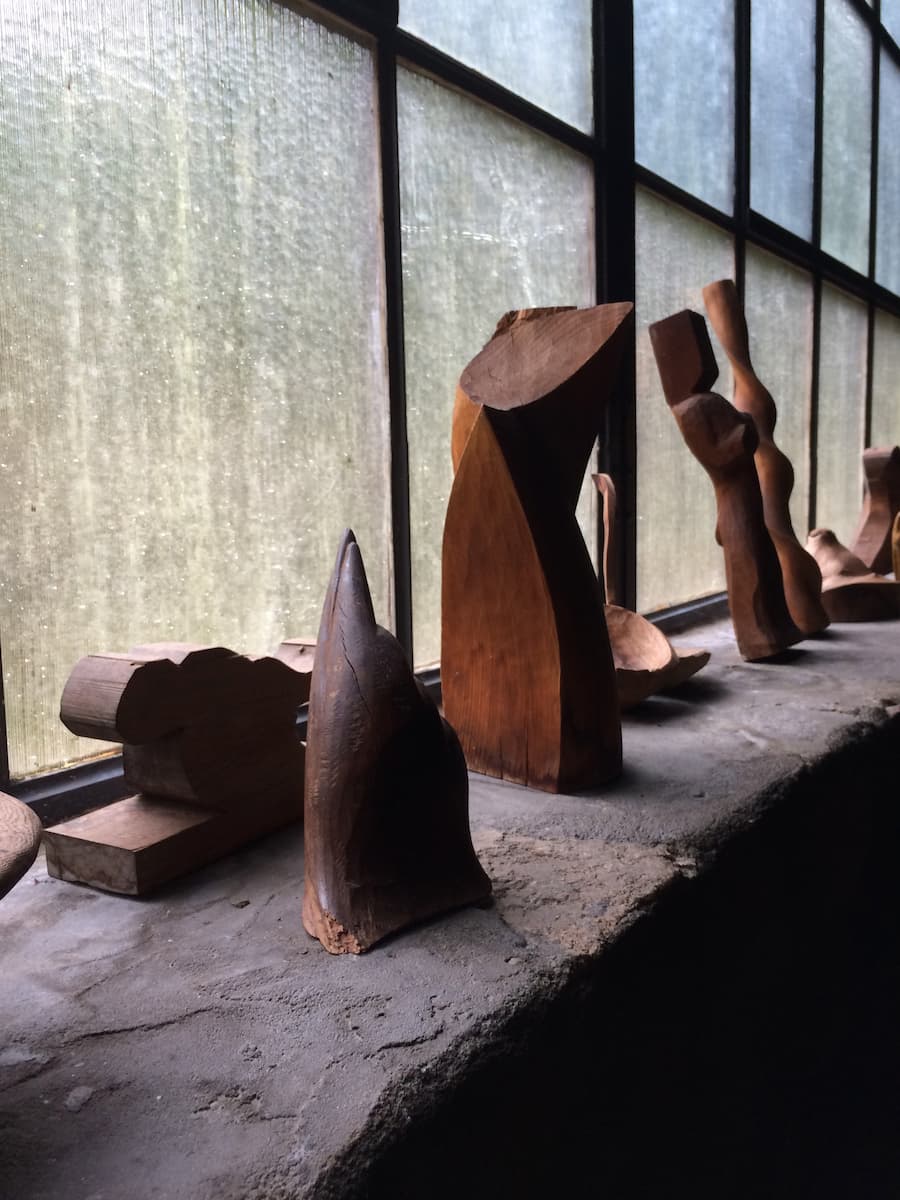
Sculptures in Esherick’s Studio Gallery
ENTRY PROCESS
Entrants should submit a completed entry form online. Please submit no more than 3 images for each entered piece; we recommend two overall images and one detail. Photographs should be JPEG or TIFF files sized at a minimum of 4 x 6 inches at 300 dpi, submitted online. The jury will select finalists via your submitted images, so we suggest sharing images that are as high quality and well-composed as possible.
There is a $30 entry fee ($20 for Museum members). The fee is non-refundable and covers the entry of up to three pieces. Additional entry fees apply for more than three pieces.
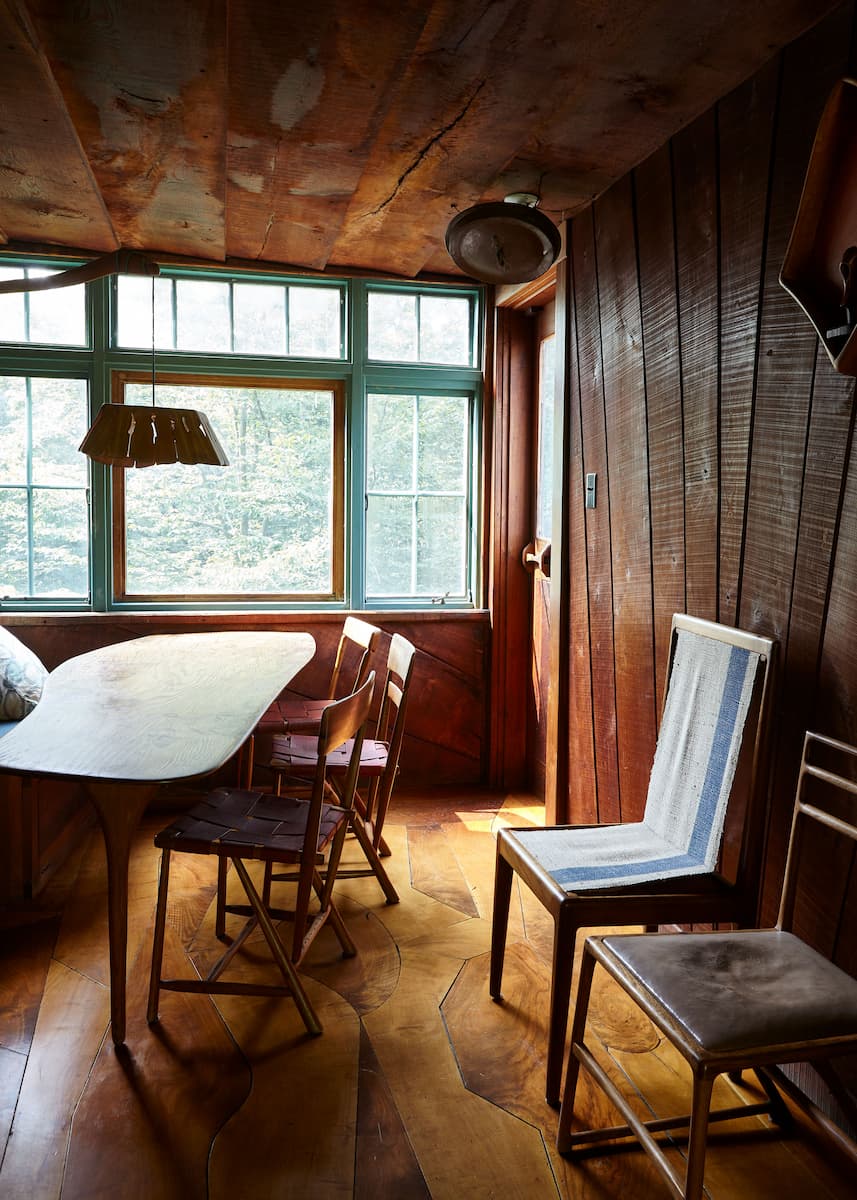
Dining Room in Esherick’s Studio
Photography by Joshua McHugh
DEADLINE
The deadline for entry has passed (January 6, 2025) by midnight. All entrants will be notified by February 21, 2025 of the jury’s decision.
SALES
Please note on your entry form if your piece(s) are for sale. If they are not for sale, please include a value for insurance and your piece will be marked “Not for Sale” during the exhibition. The Museum retains a 30% commission of your retail price if sold.
SELECTED PIECES
If your piece is selected for the onsite exhibition, you are responsible for shipping your work to the Museum. The Museum will pay the cost of shipping unsold pieces back to you after the exhibition closes. You are welcome to drop off your piece before the exhibition but if you are unable to pick up your piece after the show, you will be responsible for the cost of shipping.
Questions regarding the annual juried show? Please contact Emily Zilber at [email protected]
